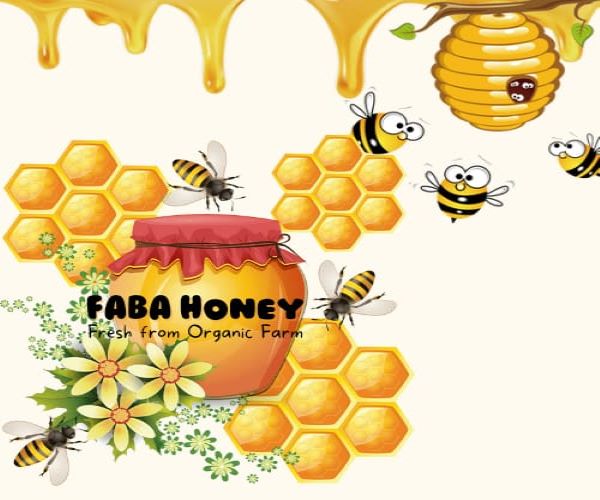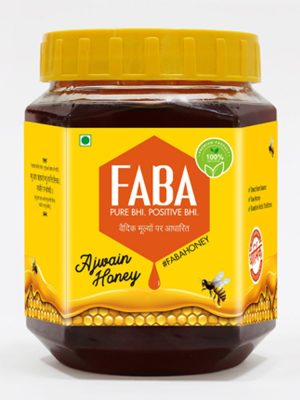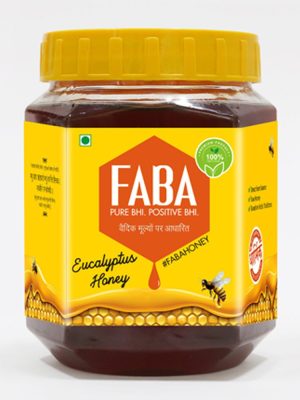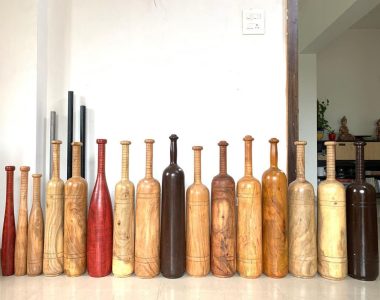
Food is an essential part of human life. There is a strong link between culture and food, this including religion and tradition. Food is often used as a means of retaining cultural identity. The safeguarding and promotion of food heritage are often considered possible ways of achieving social and cultural objectives. Beekeeping is one of the oldest traditions in India for the collection of honey. In this article, Mr. Mukesh Pathak, a beekeeper tells us about preserving this old tradition and his journey as a beekeeper.
Beekeeping is the maintenance of bee colonies, commonly in man-made hives, by humans. A beekeeper keeps bees to collect their honey and other products that the hive produces, pollinate crops, or produce bees for sale to other beekeepers.

Mukesh Pathak tells us about his journey as a beekeeper. In 2015 he heard prime minister Modi talk about the “Sweet Kranti” at an event in Jharkhand. He insisted that every farmer should keep at least ten boxes of honeybees. This made Mr. Pathak realize the importance of beekeeping and he started researching it. After researching for almost a year he decided to do beekeeping and went to his local beekeepers. They told him not to pursue beekeeping so he told them to keep 100 boxes for him too. He started spending time with them in the jungle and learned the groundwork required for beekeeping. Mr. Pathak started a beekeeping welfare society and added all the beekeepers to help them in every possible way and motivate them, this also motivated him and he began his journey of beekeeping.

In 2015 he heard prime minister Modi talk about the “Sweet Kranti” at an event in Jharkhand. He insisted that every farmer should keep at least ten boxes of honeybees
Soon he realized that most of the brands have vendors and those vendors compromised with the beekeepers for lower rates and this affected the quality of honey. This honey was further processed and syrups were added to it. Mr. Pathak was affected by it and decided to sell raw honey directly to the customers. Meanwhile, he was noticed by Prime minister Modi on Twitter which acted as a great motivation for him. He started telling people how his honey is raw and pure and started selling his honey through WhatsApp by getting in direct touch with his customers. Thus, he began the journey of Faba honey. Faba honey means flora and bee apiaries. Faba was also used because people lovingly called him “Fhatak baba” and when he launched his honey people called “faba’s” honey.

When asked, what should a customer keep in mind while buying honey? He advises us not to buy processed honey where mostly they boil the honey at 80 degrees and add rice syrup and corn syrup diluting the quality of honey. Some companies do sell raw honey but at an unbelievable high rate.
The fluidity of honey depends on the temperature. During the peak winters of December and January, it becomes thick and during the summer season, it becomes really thin. The fluidity of honey also depends on its flora. Raw honey is organic honey whereas processed honey is first heated at 40-45 degrees and then syrup is added to it. Thus, making it inorganic won’t have any natural reaction.
There’s a myth about the crystallization of honey. Most people tend to assume that crystalized honey must be impure, which is not true because crystallization is a completely natural process. Crystallization of honey depends on the source of honey, the flower from which honey has been extracted. Honey naturally contains fructose and glucose; a higher level of glucose increases the chances of crystallization. In India, mostly we get processed honey which is heated and loses its natural property of crystallization.
Honeybees extract honey from different flowers so the honey extract must have different colors and aromas to it. Have you ever wondered why branded honey mostly has the same color and aroma? Let me tell you the relationship between the color and the flavor of the honey. Pale and clear honey has a soft, delicate taste while honey with a dark color tends to have a sharper, more pronounced taste.
-
 Faba Honey 100% Organic Honey with Discount: Forest Honey
Faba Honey 100% Organic Honey with Discount: Forest Honey -
 Faba Honey 100% Organic Honey with Discount: Eucalyptus Honey
Faba Honey 100% Organic Honey with Discount: Eucalyptus Honey -
 Faba Honey 100% Organic Honey with Discount: Fresh Ajwain Honey
Faba Honey 100% Organic Honey with Discount: Fresh Ajwain Honey -
 Faba Honey 100% Organic Honey with discounts: Lichi Honey
Faba Honey 100% Organic Honey with discounts: Lichi Honey -
 Faba Honey 100% Organic Honey with Discount: Fresh Mixed Flora Honey
Faba Honey 100% Organic Honey with Discount: Fresh Mixed Flora Honey
If you are wondering does beekeeping or bee farming harms the bees? Then you need not worry because we have answers to all such queries. Beekeeping is one of the oldest traditions in India for collecting honey. The growing market potential for honey and its products has resulted in beekeeping emerging as a viable enterprise. Mr. Pathak tells us that they don’t migrate for too long keeping the safety of bees in mind.

When they change a location, a few bees check the locality, and then the rest follows. He informs us that beekeeping does not kill or harm any bee but bee hunting does. In this process of beekeeping, we get pure raw honey without harming the bees.
We are going to talk about the benefit of honey and how to use them in different ways in our daily life in the next article, Mukesh Pathak ji will share his best ideas to use honey in daily life. Stay tuned.
Follow our Non-Profit Organization Hindu Media Wiki on Twitter at this link. Hindu Media Wiki is a Resource sharing and discussion site for followers of the Hindu religion and those interested in learning more about Hinduism.








